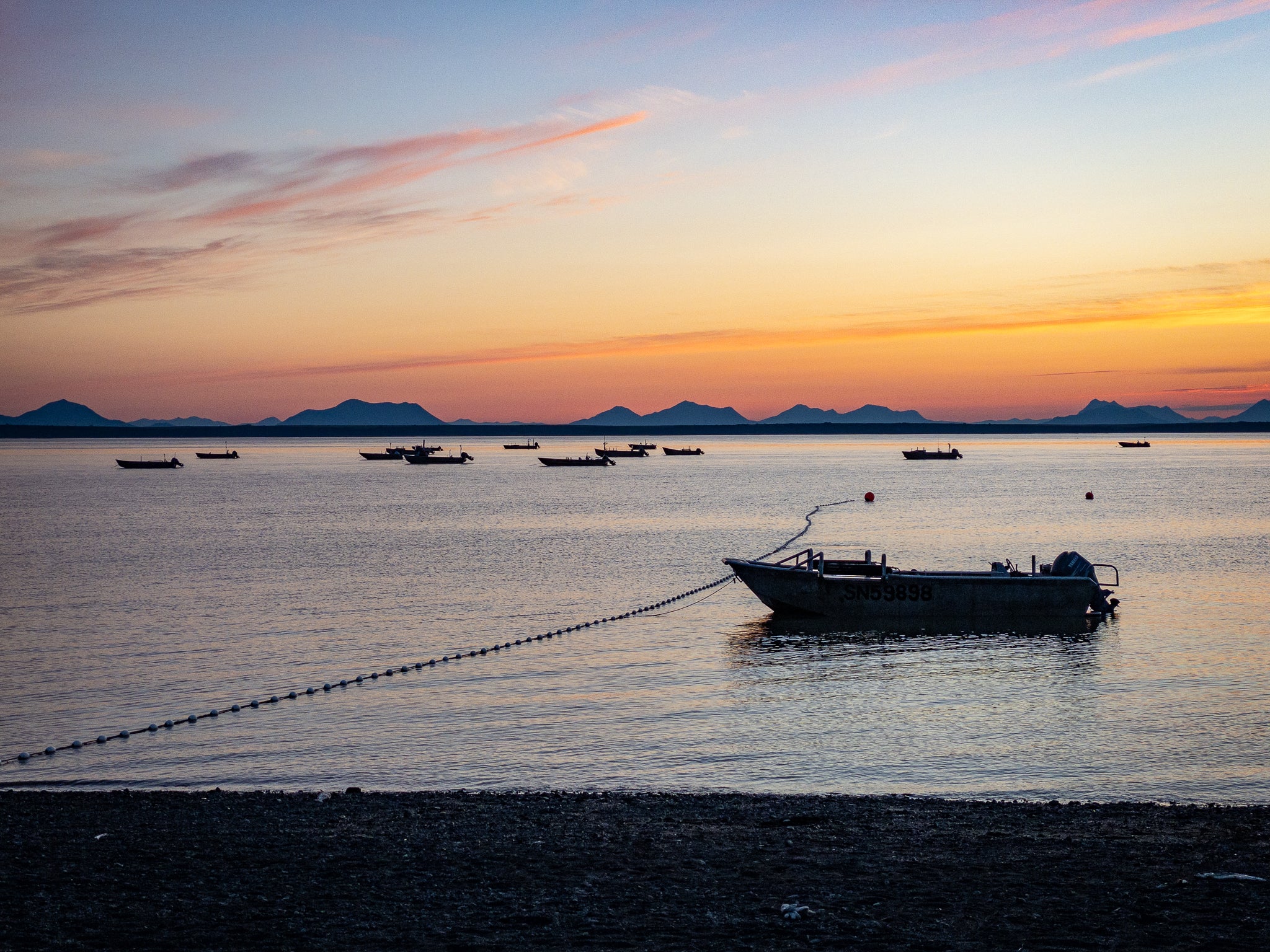Article: Postcards from Bristol – Chapter I

Postcards from Bristol – Chapter I
On a silty bay along the 59th parallel, across Aleutian Range from Anchorage, are nestled a collection plywood cabins on grassy point. Behind the cabin, a bluff rises towards the horizon. Behind the bluff, tundra extends as far as the eye can see.
It’s 12am on a clear July night – the sun having dipped below the mountains to begin its long slow arc behind the horizon – an hours-long sunset that at some point becomes a sunrise, and just skips past the whole darkness part. Inside the cabin, a chorus of phone alarms ring, and three weary bodies start to rustle in their cocoons of down.

Limbs emerge, and stretch. Hands shake out the numbness that has set in over the 3-hour sleep. Creaky fingers open and close, lubricating swollen joints. Someone rises to play the hero, and put on coffee. Slowly, the others join him, grumbling to one another a fisherman’s short-hand for, “well shit, here we go again.”
On paper, they’re on day 14 of the Bristol Bay sockeye harvest, the highest volume small boat fishery in the planet. Their bodies and circadian rhythms tell a different story, though. 12-20 hour shifts, 4 hour naps, and a sun that never sets has a way of distorting time, so that two weeks feels at once like one long month, or one endless day, depending how you look at it.
30 minutes later, first cup of coffee down the gullet, they crew leaves the cabin, and enters the midnight glow of a cloud-less July night. They steps into chest-waders and old tennis shoes. The rest – rain jacket & spare layers – are carried under arms or on backs – the first move in a constant chess game of body heat, clothing, and weather with the main objective being not to sweat. Because sweat means wet, and wet means cold.
They walk to a pebble beach, look out, and see their boat – two football fields away, floating just beyond the border where water meets mud flat. In the distance, past the mud and two miles of water twinkle the cannery lights of Dillingham. They eye their boat, noting the incoming tide moving quickly up the mud flat towards the beach, extending the distance from shoreline to boat.
“Think we’ll get to it?” The group shrugs, and one of them takes the first step.
The first few come easy, just a few inches of mud over firm gravel. Soon, the gravel falls away, and boots begin to sink deeper. They chart a straight line towards their boat, veering only to chase veins of harder mud that quickly peter out. Whatever you’ve imagined when you’ve tried to conjure up an image of fishing in Bristol Bay, unless you’ve walked it, you probably don’t think of the mud.
Ten minutes later, the mud turns to water, and cools their legs as it wraps around their calves and thighs. They lift arms to keep them dry, sloshing towards their boat – a 20ft open aluminum skiff now floating 30ft out. With 5 inches of dry wader to spare, their hands find the gunnel, and they hoist themselves aboard.
An an boat motor drops revs to life. Rain jackets are thrown on and buttoned up. Nods are given. And the throttle’s pushed down.

The wind whips the last bits of sleep from their eyes, and crew let their minds drift against the calming soundscape of 200 horsepower running full tilt, as they careen across a glassy surface into another Bristol Bay night.


Leave a comment
This site is protected by reCAPTCHA and the Google Privacy Policy and Terms of Service apply.